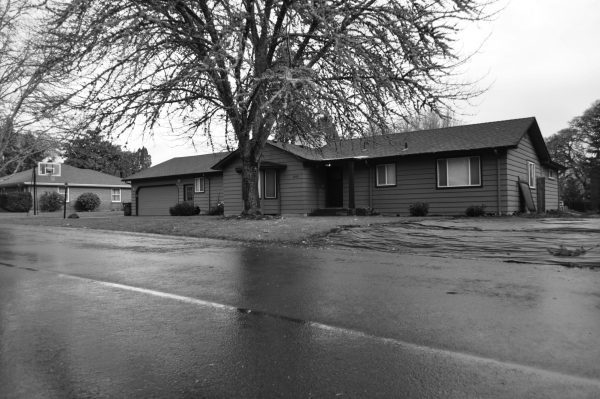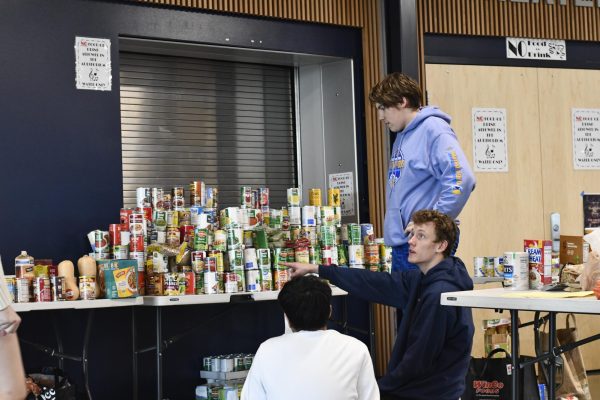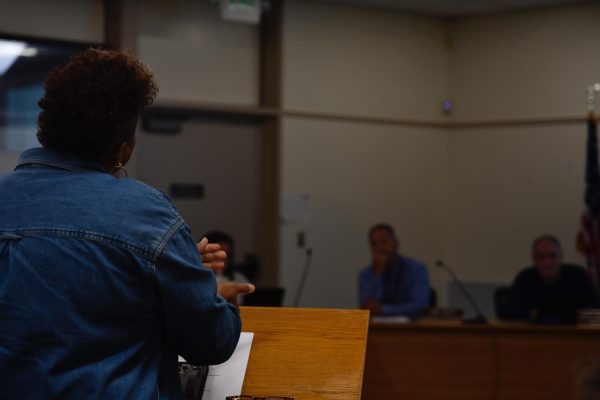Cutting $tories
Public library’s budget cuts will affect the community
At the Albany Public Library, children and parents search for a new story to read. Elderly community members ask the staff how to use computers. And in the teen section, a variety of new books are offered, which were once paid for by the city. But by next year, there will be no funds to pay for new resources. New books and other materials will be bought exclusively with private funds. ![]()
This has not been a gradual cut. In 2017, 7.60 percent of all resources were paid for by private donors. By 2018 the usage of private donors’ funds reached 14.84 percent, and jumped to 84.51 percent by 2019. With less funding, there will likely be a cut on all books, DVDs, ebooks, databases, and more, according to Assistant Director Amanda Bressler.
PERS, or the Public Employees Retirement Fund, is the main reason why the city is cutting funds. This retirement fund, which employees and the city paid into, provides retired public employees a pension, or monthly pay, after they retire. The city is redirecting funding toward PERS instead of the city’s resources in order to fulfill its obligation to retired employees. Every other department in the city is also affected, and each are taking their own measures to save money.
City council members proposed other solutions to help cut city costs, including shutting down the Carnegie Library downtown, or selling it to repurpose it into a new building. Another proposed solution was to close the South Albany community pool.
Although all of those closures are still on the table, the library has its own solutions to keep up the vitality. One solution is to close the library earlier, which would cut staff pay.
Every member of the community will be affected by these possible solutions. Cutting hours will affect students who use the library to research. According to a 2018 study by the U.S. Census Bureau, 18 percent of the local community does not have internet access. Bressler says, “[Students] have these very limited hours that they can come to the library and get [homework] done on one of our computers with the internet at no cost to them.”
Research databases will be inaccessible to those without internet at home and reduced funds will limit how much information can be put on these databases. Subscriptions to these informational sites are expensive, and it may not be within the new budget of the library.
Students like junior Jenna Scott will face these consequences firsthand. Using the library to study once or twice a week, she expresses her concern of cutting hours. “It’ll definitely affect the library, which will in turn affect me because if the city’s not paying for stuff, I don’t think that [there will be] a lot of the resources available. But they’re going to have to cut down on [them]. Which will in turn affect everybody else who uses the resources. Like me, who uses the computers.”
A large group of students here at WAHS use the library as well. According to a 96-student survey conducted by the Whirlwind staff, 40 percent of students use the public library either once a month or more than that.
The homeless population also uses the library as a secure cover before shelters open up in the evening. “We have a lot of people who don’t have a home to go to, who spend the night in shelters or on the street and spend their day in the library,” Bressler said. “When our hours get affected, that puts those people back out on the street for those hours that we’re closed.”
Without a shelter during these hours, there will be no place for them to go. This is especially harmful during the winter season when the climate is much colder and harsh for them to stay out in.
The library is not going to give up on the fight, but there will be major downfalls for the next couple of years. “We can’t run the library without books or resources,” Bressler said, “because that’s what we do and the service we provide.”
Your donation will support the student journalists of West Albany High School. Your contribution will allow us to purchase equipment and cover our annual website hosting costs.









